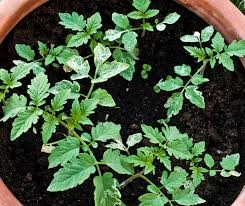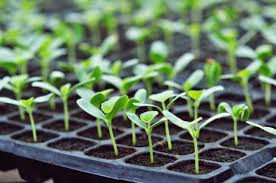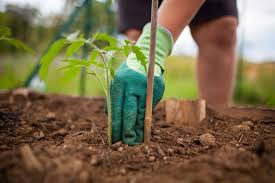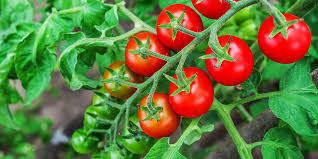Growing tomatoes from seed is a rewarding and cost-effective way to enjoy a wide variety of fresh, flavorful tomatoes in your garden. Whether you’re a novice gardener or an experienced one, starting tomatoes from seed allows you to explore unique and less common varieties that may not be available as seedlings in local nurseries. In this guide, we’ll walk you through the process, from gathering your supplies to transplanting your young plants into the garden.
Benefits of Growing Tomatoes from Seed
While it’s easy to pick up tomato seedlings from the store, growing them from seed offers several advantages. First, it’s budget-friendly—typically, you can buy a packet of 20 seeds for the price of a single seedling. More importantly, it opens up a world of variety. From cherry and beefsteak to heirloom and indeterminate varieties, growing your own allows you to experiment with colors, sizes, and flavors that might not be available locally.
What You’ll Need
To start your tomatoes from seed, you’ll need a few basic supplies:
- Tomato seeds (choose from a variety of types, like heirloom, indeterminate, or determinate)
- Seed starting mix or light soil
- Containers (seed trays or small pots)
- Spray bottle for gentle watering
- Plant markers to keep track of varieties
Optional items include a germination station (a warm, humid spot or small greenhouse), grow lights, and heat mats if needed.
When to Start
Timing is crucial. Tomatoes need warmth to germinate, and they should be ready to transplant a few weeks after the last frost date in your area. A good rule of thumb is to start your seeds 6-8 weeks before the last predicted frost. You can find your area’s last frost date by checking resources like the Old Farmer’s Almanac.

Preparing Your Seed Trays
Fill your seed trays with a loose, well-draining starting mix, leaving about ¾ inch of space at the top. Gently tap the tray to settle the soil, then smooth it out. Sow 2-3 seeds per cell to ensure germination, covering them with about a quarter inch of soil. Lightly press the surface and water gently with your spray bottle to keep the soil moist but not waterlogged.
Germination Station
Place your seed trays in a warm, humid environment between 65-85°F. This could be a greenhouse, cold frame, or even under plastic wrap. Tomato seeds do not need light to germinate, but once they sprout, they will require plenty of light. Check your trays daily, keeping the soil moist. After a week or two, you’ll see tiny seedlings emerge, often still carrying their seed coat.

Providing Light and Daily Care
Once your seeds sprout, provide light. If using a window, rotate the trays regularly so the plants grow straight. If using grow lights, position them 2-3 inches above the seedlings. Water daily with a spray bottle when the soil surface feels dry. As they grow, thin your seedlings to leave the strongest plant in each cell.
Repotting and Hardening Off
Once your seedlings have a few sets of true leaves, they’ll be ready for larger pots. Gently remove them from the seed tray and repot into individual containers with potting mix. If you started in biodegradable pots, you can plant them directly into the garden.
Before moving your tomatoes outdoors, “harden them off” by gradually introducing them to outdoor conditions over a week or two. Start by placing them in a sheltered, shaded area, and slowly increase sun exposure.
Transplanting to the Garden
After your tomatoes have acclimated to the outdoors and the weather is consistently warm, it’s time to transplant them into your garden. Choose a sunny spot with well-drained soil, and plant them deep enough to bury part of their stems. Tomatoes develop roots along their stems, so burying them can help them grow stronger. If using containers, ensure they are large enough to accommodate the roots.

Stake your plants to provide support as they grow. Water them well after transplanting and continue to provide consistent care.
Conclusion
By following these steps, you’ll be on your way to enjoying homegrown tomatoes in a variety of shapes, sizes, and flavors. Growing tomatoes from seed allows for greater variety and satisfaction, and with some patience and attention, you’ll be harvesting your own delicious tomatoes all season long. Happy gardening!
